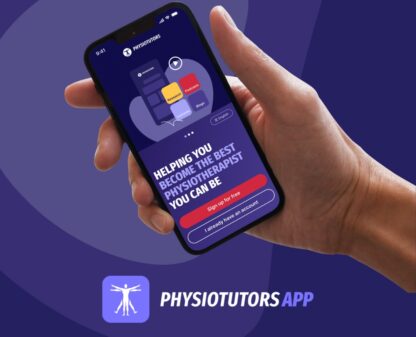Meniscus Tear

Body Chart

- At height of the joint line (medial or lateral)
Background Information
Patient Profile
- Acute injury rather in young people engaging in sports
- Degenerative tears in older people without trauma in history
Pathophysiology
Acute: Hyperextension trauma or flexion-rotation-trauma under load (sports, work, ADL)
Degenerative changes over the years and repetitive normal movement without trauma
Acute: Pain- and tissue healing mechanisms align
Inflammation phase: Dominant inflammatory nociceptive: signs of inflammation, night pain, pulsating, immobilization leads to stiffness, sometimes increases with rest
Proliferation phase: Dominant mechanical nociceptive: clear on/off behavior, load dependent pain, local, decreases with rest
Chronic: Pain- and tissue healing mechanisms do not align
Dominant mechanical nociceptive: clear on/off behavior, load dependent pain, local, decreases with rest
Course
Aggravating
Acute: Pain is movement dependent – Flexion/extensionChronic: Under increasing load – Compression & shear forces
Easing
Acute: Rest, icingChronic: Reduce activities, avoid overload & shear forces
24 Hour
Acute: Night pain due to local inflammation
Chronic: More pain at night, possible intraarticular swelling
History & Physical Examination
History
History of knee trauma; knee exposed to high loads in work, sport, ADL Usually trauma; older patients also inadequate trauma (degenerative tear)
- “Giving way” possible but not main symptom
- Typically no feeling of instability
- Acute: Locking in Flex/Ext, limited ROM, local pain, stinging, deep
- Chronic: Degeneration pain, “cracking” or “popping”, dull pain
Physical Examination
InspectionAcute: Signs of inflammation medial side, possible hemarthrosis, intraarticular swelling, protective postureChronic: Quadriceps/gastrocnemius atrophy, barely any swelling
Functional AssessmentAcute: not possible due to symptomsChronic: Deep squat, climbing stairs, cutting motion, “giving way” rather described than demonstrated
Active ExaminationAcute: limited ROM in Flex/Ext/Rot and pain upon small loadChronic: end of range limitation in Flex/Ext; high loads in combination with these movements is painful. Balance problems – single leg stance, step-up
Passive ExaminationAcute: PROM limited, swellingChronic: End or range ROM can be limited, structural instability apparent
Special Testing
Differential Diagnosis
- Subchondral injury
- Damaged cartilage
- Gonarthrosis
- Avulsion fracture biceps femoris
- Tibial plateau fracture
- Unhappy triad
- Pes anserinus irritation
- Patella luxation
- PFPS
- Quadriceps tendon rupture
- Patella tendon rupture
- Osgood Schlatter
Treatment
Strategy
Conservative: coper, isolated injury, >45 years old, linear sportsSurgical: non-coper, multidirectional injury, <45 years old, high risk sports
Interventions
Post-OP: Adapt interventions/load to tissue healing phasesConservative: Identify deficits in strength, neuromuscular control, passive structuresPrinciples: concentric before eccentric, slow to fast, low load + high rep to high load + low rep, two-legged to one-legged, pay attention to sport specific demands
References
- Elbaz, A., Beer, Y., Rath, E., Morag, G., Segal, G., Debbi, E. M., Debi, R. (2013). A unique foot-worn device for patients with degenerative meniscal tear. Knee Surg Sports Traumatol Arthrosc, 21(2), 380-387. doi: 10.1007/s00167-012- 2026-2
- Goossens, P., Keijsers, E., van Geenen, R. J., Zijta, A., van den Broek, M., Verhagen, A. P., Scholten-Peeters, G. G. (2015). Validity of the Thessaly test in evaluating meniscal tears compared with arthroscopy: a diagnostic accuracy study. J Orthop Sports Phys Ther, 45(1), 18-24, B11. doi:10.2519/jospt.2015.5215
- Howell, R., Kumar, N. S., Patel, N., Tom, J. (2014). Degenerative meniscus: Pathogenesis, diagnosis, and treatment options. World J Orthop, 5(5), 597-602. doi: 10.5312/wjo.v5.i5.597
- Katz, J. N., Brownlee, S. A., Jones, M. H. (2014). The role of arthroscopy in the management of knee osteoarthritis. Best Pract Res Clin Rheumatol, 28(1), 143-156. doi: 10.1016/j.berh.2014.01.008
- Lange, A. K., Fiatarone Singh, M. A., Smith, R. M., Foroughi, N., Baker, M. K., Shnier, R., Vanwanseele, B. (2007). Degenerative meniscus tears and mobility impairment in women with knee osteoarthritis. Osteoarthritis Cartilage, 15(6), 701-708. doi:10.1016/j.joca.2006.11.004
- Neogi, D. S., Kumar, A., Rijal, L., Yadav, C. S., Jaiman, A., Nag, H. L. (2013). Role of nonoperative treatment in managing degenerative tears of the medial meniscus posterior root. J Orthop Traumatol, 14(3), 193-199. doi: 10.1007/s10195-013-0234-2
- Noyes, F. R., Heckmann, T. P., Barber-Westin, S. D. (2012). Meniscus repair and transplantation: a comprehensive update. J Orthop Sports Phys Ther, 42(3), 274-290. doi: 10.2519/jospt.2012.3588
- Powers, C. M. (2010). The influence of abnormal hip mechanics on knee injury: a biomechanical perspective. J Orthop Sports Phys Ther, 40(2), 42-51. doi: 10.2519/jospt.2010.3337
- Snyder-Mackler, L., Risberg, M. A. (2011). Who needs ACL surgery? An open question. J Orthop Sports Phys Ther, 41(10), 706-707. doi: 10.2519/jospt.2011.0108
- Stensrud, S., Roos, E. M., Risberg, M. A. (2012). A 12-week exercise therapy program in middle-aged patients with degenerative meniscus tears: a case series with 1-year follow-up. J Orthop Sports Phys Ther, 42(11), 919-931. doi:10.2519/jospt.2012.4165
- Zazulak, B. T., Hewett, T. E., Reeves, N. P., Goldberg, B., & Cholewicki, J. (2007). Deficits in neuromuscular control of the trunk predict knee injury risk: a prospective biomechanical-epidemiologic study. Am J Sports Med, 35(7), 1123-1130. doi: 10.1177/0363546507301585


